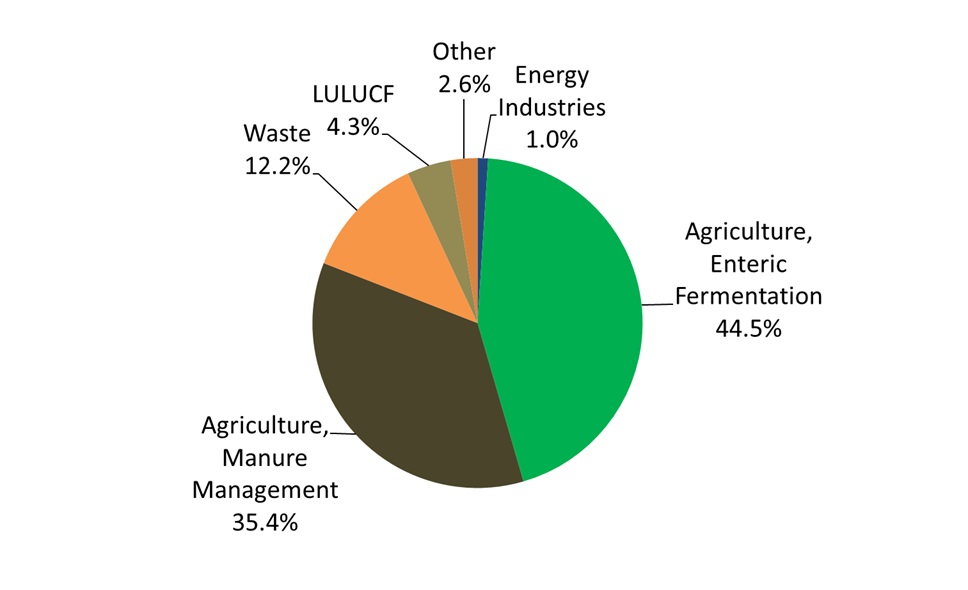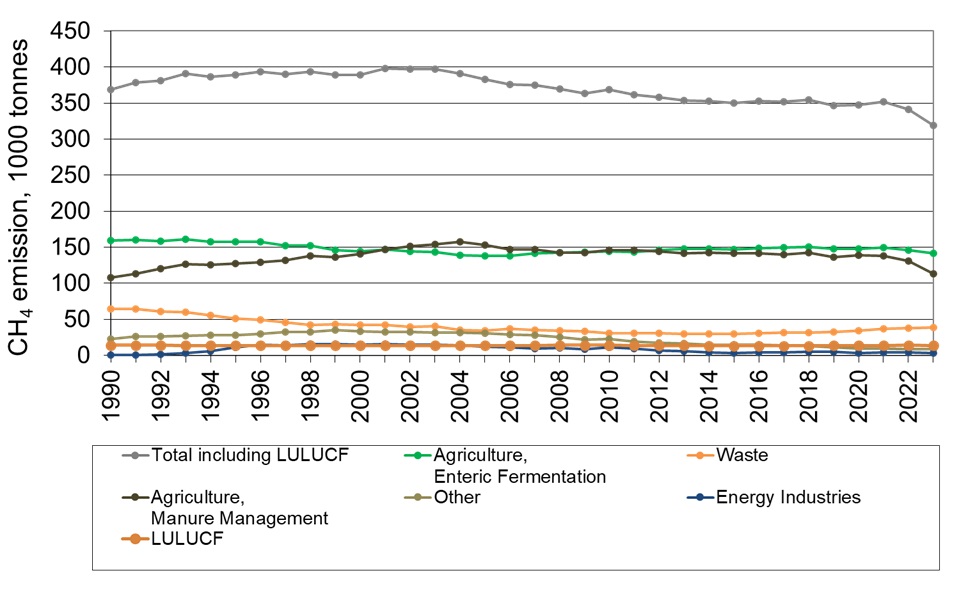The largest sources of anthropogenic CH4 emissions are agricultural activities. The emission from agriculture derives from enteric fermentation and management of animal manure.
Since 1990, the emission of CH4 from enteric fermentation has decreased, mainly due to the decrease in the number of cattle. However, this reduction is countered by an increase in emissions from manure management caused by a change in housing type towards slurry-based systems. In later years, the emission from manure management has decreased due to changes in manure management, e.g. more biogas treatment and acidification of slurry. The emission of CH4 from solid waste disposal has decreased significantly since 1990, due to an increase in the incineration of waste and extensive recycling thereby causing a decrease in the landfilled degradable waste. The CH4 emission from the energy sector increases from mid 1990ties from public power and district heating plants increases due to the increasing use of gas engines in the decentralised cogeneration plant sector. Due to the liberalisation of the electricity market the use of gas engines declined from 2005 onwards. The high emission from gas engines is caused by the fact that up to 3 % of the natural gas in the gas engines is not combusted.
CH4 emission, 2023


(For background data click here)
Links to detailed background data for greenhouse gas emissions can be found under "Supporting documentation".